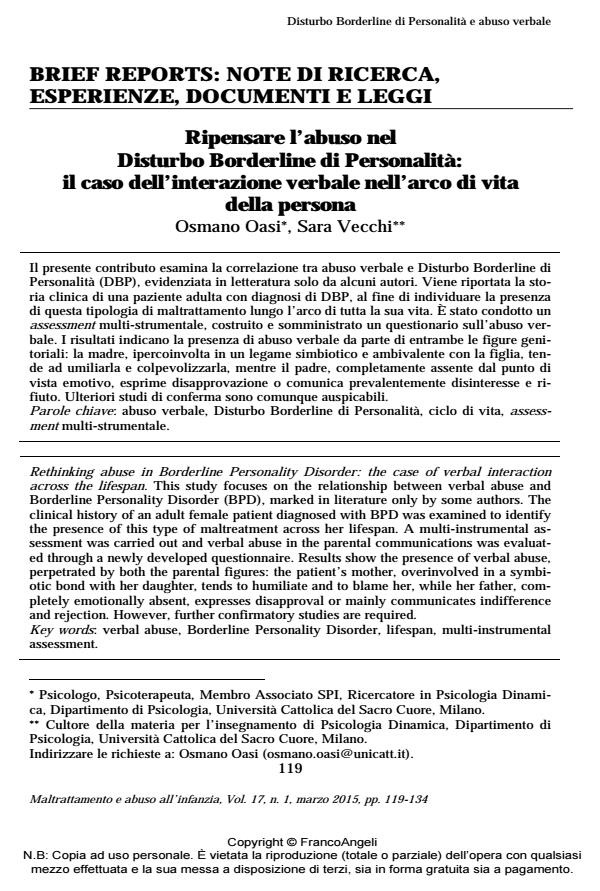Rethinking abuse in Borderline Personality Disorder: the case of verbal interaction across the lifespan
Journal title MALTRATTAMENTO E ABUSO ALL’INFANZIA
Author/s Osmano Oasi, Sara Vecchi
Publishing Year 2015 Issue 2015/1
Language Italian Pages 16 P. 119-134 File size 200 KB
DOI 10.3280/MAL2015-001007
DOI is like a bar code for intellectual property: to have more infomation
click here
Below, you can see the article first page
If you want to buy this article in PDF format, you can do it, following the instructions to buy download credits

FrancoAngeli is member of Publishers International Linking Association, Inc (PILA), a not-for-profit association which run the CrossRef service enabling links to and from online scholarly content.
This study focuses on the relationship between verbal abuse and Borderline Personality Disorder (BPD), marked in literature only by some authors. The clinical history of an adult female patient diagnosed with BPD was examined to identify the presence of this type of maltreatment across her lifespan. A multi-instrumental assessment was carried out and verbal abuse in the parental communications was evaluated through a newly developed questionnaire. Results show the presence of verbal abuse, perpetrated by both the parental figures: the patient’s mother, overinvolved in a symbiotic bond with her daughter, tends to humiliate and to blame her, while her father, completely emotionally absent, expresses disapproval or mainly communicates indifference and rejection. However, further confirmatory studies are required.
Keywords: Verbal abuse, Borderline Personality Disorder, lifespan, multi-instrumental assessment.
Osmano Oasi, Sara Vecchi, Ripensare l’abuso nel Disturbo Borderline di Personalità: il caso dell’interazione verbale nell’arco di vita della persona in "MALTRATTAMENTO E ABUSO ALL’INFANZIA" 1/2015, pp 119-134, DOI: 10.3280/MAL2015-001007